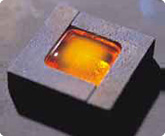- Make sure this fits by entering your model number.
- 8x magnification with a 356-foot field of view at 1, 000 yards
- 25mm objective lens diameter
- Weighs 9.5 ounces
- Metal body with rubber armor
- 100 percent waterproof and Fogproof
Product Description
Compact and lightweight, the premier lx-l 8×20 and 10×25 binoculars are the perfect travel companion. Optically, they are unmatched in the world of compact offerings. Not only do they offer an amazing field of view for a compact, but they also deliver exceptional close-focus distance and long eye relief. True to Nikon premier lx-l form, they are also guaranteed completely waterproof and fogproof.
From the Manufacturer
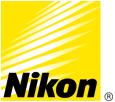 |
 |
Compact and lightweight, the Premier LX-L 8×20 and 10×25 binoculars are the perfect travel companion. Optically, they are unmatched in the world of compact offerings. Not only do they offer an amazing field of view for a compact, but they also deliver exceptional close-focus distance and long eye relief. True to Nikon Premier LX-L form, they are also guaranteed completely waterproof and fogproof.
Nikon has set a new standard in pocket binocular performance notable for those hunters who appreciate the finer details of their sport. The Premier LX-L compacts deliver legendary Nikon optical performance in a package that not only is useable on any hunt, but that can also fit into the budget plans of any serious enthusiast.
Joining Nikon’s highly acclaimed 8×42/10×42 and 8×32 LX binoculars in the Nikon Premier Optics lineup, the new mini 10×25 LX-L compact matches the needs of a wide range of hunters who value ultra-small size and portability, but refuse to sacrifice optical quality in the bargain.
Nikon engineers designed these compacts to over-deliver on features and performance and to under-deliver on size. Measuring a scant 4.3 x 4.4 inches, the two mini binoculars tip the scales at just about 10 ounces each, making them as portable as anything on the planet when it comes to high-performance hunting optics.
As part of the Nikon Premier binocular line, the LX minis are built using the very finest optical components to ensure exceptional handling and peak optical performance. Nikon’s exclusive Eco Glass, made without the use of lead or arsenic, is used throughout the optical system. Lenses are carefully ground and polished, then coated with multiple layers of proprietary anti-reflective compounds for incredibly bright images, even in twilight or other poor light conditions.
High-grade prisms used in the LX-L get two types of coating–a silver coating to boost light transmission, and a special phase correction coating for sharpness and clarity. Together, the mini LX-L optical system provides extremely bright, tremendously sharp images, huge fields of view (282-356 feet @ 1,000 yards), lengthy eye relief (15mm) and closefocus distances that are unheard of among the world’s high-end compacts—7.8 or 10.4 feet.
To maximize ruggedness, Nikon built the 8×20 and 10×25 LX-L compact on a tough, lightweight magnesium alloy chassis–rubber armored for shockproof integrity–and then purged it of all moisture with bone-dry nitrogen for 100% guaranteed waterproof and fogproof performance. The little LX-L also features the convenience of smooth central focusing, a central diopter control and slide and lock eyecups that retract for use with eyeglasses.
As with all other Nikon binoculars, these Premier compacts are backed by Nikon’s 25 Year Limited Warranty and No-Fault Repair/Replacement Policy.
Technical Specs
| Model | 8×20 | 10×25 |
| Product Number | 7506 | 7507 |
| Focusing System | CF | CF |
| Magnification X | 8 | 10 |
| Objective Diameter (mm) | 20 | 25 |
| Angular Field of View (Real) | 6.8 | 5.4 |
| Angular Field of View (Apparent) | 50.8 | 50.5 |
| FOV @ 1000 yds. (ft.) | 356 | 283 |
| Close Focus Distance (ft.) | 7.8 | 10.4 |
| Exit Pupil (mm) | 2.5 | 2.5 |
| Relative Bightness | 6.3 | 6.3 |
| Eye Relief (mm) | 15 | 15 |
| Size – (L & W) (in) | 3.7 x 4.3 | 4.4 x 4.3 |
| Weight (oz) | 9.5 | 10.5 |
| Prism Coating | Phase Corrected, Silver Coating | Phase Corrected, Silver Coating |
Nikon EDG Key Highlights
Phase-Corrected, Silver Coated Roof Prisms Nikon’s phase-correction roof prisms enhance resolution for excellent detail. The silver coatings, coupled with fully multicoated lenses deliver extremely bright, clear, vivid images across the periphery of the viewing field.
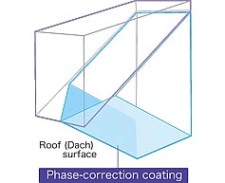 |
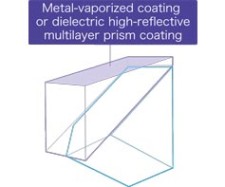 |
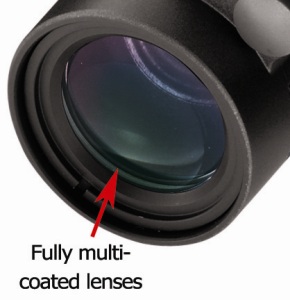 |
A Rugged, Durable Binocular The Nikon EDG binocular was designed for ergonomic functionality, durability and precise balance in the hand. Its magnesium alloy body offers ruggedness at a sensible weight.
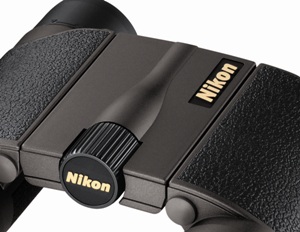
Nikon Premier Additional Highlights
- O-ring sealed and dry nitrogen filled for waterproof, fogproof performance
- Turn-and-slide rubber eyecups with multi-click adjustments are extremely eyeglass friendly
- Environmentally sound and lightweight Eco-Glass used throughout
 Warranty Information
Warranty Information
Nikon is dedicated to quality, performance and total customer satisfaction. If your Nikon binocular, Spotting Scope or Fieldscope requires service or repair not covered by our 25 Year Limited Warranty, Nikon will repair or replace it (even it was your fault) for just $10, plus return shipping and handling.
Excludes – StabilEyes, Laser Rangefinders and Spotting Scope/Fieldscope eyepieces.
FAQ’s
Real field of view
Real field of view is the angle of the visible field, seen without moving the binoculars, measured from the central point of the objective lens. The larger the value is, the wider the viewfield available. For example, binoculars with a wider field of view are advantageous for locating fast-moving wild birds within the viewfield. This also applies for finding small nebulas or a cluster of stars in astronomical observations.

Apparent field of view
Apparent field of view is the angle of the magnified field when you look through binoculars.
The larger the apparent field of view is, the wider the field of view you can see even at high magnifications.
With the conventional method used previously, the apparent field of view was calculated by multiplying the real field of view by the binocular magnification. (With this formula, apparent field of view wider than 65˚ is called wide field of view.)
After revision, Nikon’s figures are now based on the ISO 14132-1:2002 standard, and obtained by the following formula:
tan ω’ = τ x tan ω
Apparent field of view: 2ω’
Real field of view: 2ω
Magnification: τ
(With this formula, apparent field of view wider than 60° is called wide field of view.)
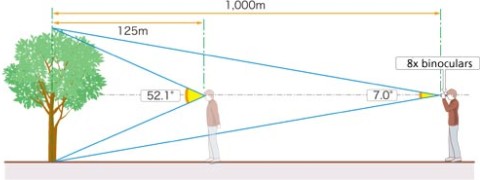
For example, the apparent field of view of 8x binoculars with an 7.0°real field of view is as follows:
2ω’ = 2 x tan-1 (r x tan ω)
= 52.1°
Relative Brightness
Relative brightness value is obtained by squaring the diameter of the exit pupil. The greater the relative brightness is, the brighter the image will be. With 8×42 binoculars, the brightness is (42÷8)2= 28.1. This means that if the magnification is the same, the larger the effective diameter of the objective lens, the brighter the image will be.
Prism Coatings
Multilayer coating is also applied to prisms to raise transmittance. A roof prism system has one surface that does not feature total internal reflection, so vapor deposition with metals, etc. must be used to raise the reflectivity of this surface. Also, phase-correction coating on roof surface ensures high-contrast images.
*Binoculars’ brightness and contrast are affected by not only prism coatings, but also the number of objective lens and eyepiece lens, and types of coatings.
Metal-vaporized, high-reflectivity prism coating Using vacuum-vaporization technology, metallic material such as aluminum or silver is applied to the reverse side of a prism surface that is not totally reflective. This raises the reflectivity of the prism mirror surface. Dielectric high-reflective multilayer prism coating |
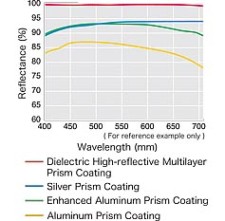 Reflectance characteristics of prism coatings on mirror surface Reflectance characteristics of prism coatings on mirror surfaceThe horizontal axis indicates the wavelength of light. The vertical axis indicates the reflectance of light. Binoculars’ brightness is determined not only by the reflective mirror, but also by the total optical system such as the number of lenses and quality of coatings. |
Phase-correction coating A roof (Dach) surface can cause phase shift of light that affects image resolution. This phenomenon is caused by phase differences arising from total light reflection on a roof (Dach) surface and it can occur with even a perfectly processed prism. Phase-correction coating is applied to the surface to minimize loss of resolution, ensuring high-contrast images. |
Twilight Factor
The factor that has the greatest impact on resolution or image detail, will be dependent upon the amount of light available during the time of observation. During daylight hours, when your eye pupil size will be only about 2 to 3mm, magnification will be the principal factor in image resolution. At night, with the eye pupil dilated to 6 to 8mm, aperture size is the controlling factor. In twilight conditions both of these factors control resolution effectiveness and the twilight factor is the term that compares binocular performance under these conditions.
The twilight factor is calculated by taking the square root of the product of the magnification and the aperture. The higher the twilight factor, the better the resolution of the binocular when observing under dim light conditions. For example, a 10 X 40 (twilight factor 20) would effectively resolve better under these conditions than a 7 X 35 (twilight factor 15.4) even though the 10 X 40 has a smaller exit pupil. Remember, however, that the twilight factor does not take into account the transmittance or quality of the optical system.
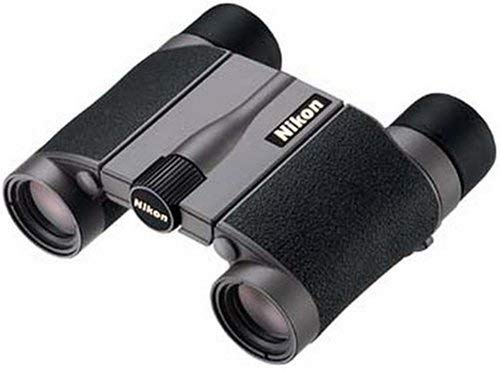

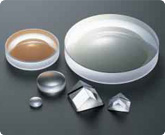 Lenses and prisms made using Eco-glass
Lenses and prisms made using Eco-glass 